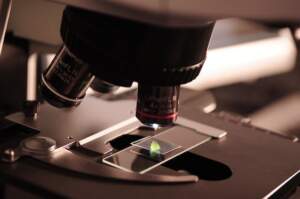
BA/BE studies provide crucial information about the rate and extent of drug absorption into the bloodstream, which can assist with dosage adjustments, reformulation decisions, or regulatory approval decisions.
This special edition of our Deep Dive digital magazine explores pharmacology – the study of how drugs enter, move through and leave the body.
What is Bioavailability/Bioequivalence (BA/BE) Study?
An BA/BE study compares the bioavailability (BA) of generic drug alternatives to their reference product in clinical trials, measuring how much active ingredient enters and becomes available at its target site in the body. Pharmacokinetics studies analyze how drugs enter, move through, change within and exit our bodies over time; BA/BE studies are an integral component of drug clinical development and ensure patients receive quality generic alternatives to innovator products.
BA BE studies typically involve healthy adult populations using a two-way crossover design to compare the benefits and risks of the test and reference formulations. Manufacturers sometimes conduct relative BE studies in pediatric populations in order to gauge how suitable generic versions of their reference pediatric product might be for children.
Generic medications that exhibit similar pharmacokinetic characteristics as their respective reference products in clinical studies pass the BE test and are considered bioequivalent by the FDA. Bioequivalence is defined by this ratio: for any test formulation within an acceptability range between 80-125% of its maximum concentration achieved within bloodstream exposure versus reference formulation exposure.
For drug manufacturers to demonstrate BE, adequate in vitro data must be available that accurately reflects human in vivo bioavailability as well as well-designed comparative clinical trials utilizing well-designed comparator and reference drugs or vaccines and measuring participants at different time points for biopharmaceutical parameters before statistically analyzing results using appropriate statistical methods.
Due to different absorption properties between drug dosage forms, BE studies often fail in pediatric populations. If this is the case for you, conducting a pediatric bridging study might be necessary for successful completion.
Before conducting a pediatric BE/relative BE study, it is crucial to identify factors leading to failures or differing PK parameters between test and reference formulations and understand what has caused failure or different PK parameters between them. Frontage has created a database with over 79 clinical studies that failed BE evaluations or showed differences in PK parameters between them and highlighted possible risk factors associated with these failures.
Why Conduct a BA/BE Study?
BA/BE studies for pharmaceutical products are one of the key elements in ensuring their safety and efficacy. These clinical trials assess how quickly a medication is absorbed into the body after administration, as well as its interactions with other drugs medical conditions, or treatments.
Researchers conducting the BA/BE process administer both test product and reference product to a group of healthy volunteers or patients and monitor how quickly it reaches the maximum concentration in their system. Once this data has been compiled, researchers compare them and decide if either is bioequivalent.
To conduct BE/BA clinical trials successfully, research teams must abide by stringent regulatory requirements set out in a study protocol. Once submitted for approval by an Independent Research Board (IRB) comprised of medical experts and community members. IRB members ensure all clinical trials comply with stringent safety rules while protecting participants against potential risks.
BE/BA studies are necessary for both new and generic drugs seeking regulatory approval from regulatory agencies like the Food and Drug Administration (FDA) or the European Medicines Agency (EMA). These clinical trials compare pharmacokinetic parameters between the test product and reference product; such as the maximum body concentration of the drug, the time required to reach it, and the area under its plasma concentration curve over time.
These tests typically employ a randomized crossover design in which each participant receives one period of the test product and two periods of its reference product with appropriate washout periods in between, to ensure any differences in effect are due solely to compound effects rather than individual differences in absorption or elimination.
BE/BA is an integral part of drug development and manufacturing, enabling companies to produce lower-cost versions of innovator drugs to increase access to affordable healthcare.
How to Conduct a BA/BE Study
BA/BE studies are an integral component of drug development for both new drugs and generics alike, testing how quickly and how completely a medication is absorbed into the bloodstream following administration. This information can help assess both its safety and efficacy while also informing dosage requirements and best practices.
An average BA/BE study involves administering various forms of drug to healthy volunteers or patients and measuring how much of it has been absorbed over time. Results are then compared with control group data to establish bioequivalence between test and reference products.
BE evaluation can be performed through various in vivo and in vitro methods, depending on regulatory requirements. Generally, BE is considered achieved when geometric mean ratios between Cmax and Tmax from test formulations and reference formulations fall within BE acceptance limits.
BE is also applicable for generic products as long as their PK parameters are comparable between test and reference products, which is often accomplished using a BE trial in which both tests and reference products are given to different groups of patients (for instance pediatrics or elderly adults), with their PK parameters measured across both populations.
Relative bioequivalence studies (REBEs) can also be a valuable asset to drug manufacturers. Less rigorous than BE trials, relative BE studies allow drugmakers to compare absorption between two pharmaceutical formulations–for instance comparing new pediatric formulation with existing adult formulation.
They generally focus on measuring rates and extents of absorption – so can provide valuable data regarding potential interactions. Relative BE studies typically examine the rate and extent of absorption between them in terms of rate and extent, such as between novel pediatric formulation and existing adult formulation.
FDA may grant sponsors of class D drugs with high within-subject variability and wide therapeutic window the flexibility to demonstrate BE using scaled average bioequivalence, typically through replicate cross-over design trials with washout periods that equal at least the elimination half-life of their medication.
What to Expect from a BA/BE Study
Undergraduate ba/be studies in clinical research offers numerous employment options; however, selecting the correct career path is critical in securing financial future and physical well-being. Unhappily engaging in your job could significantly diminish your quality of life – and vice versa!
Journalism is an ideal career choice following a BA, as it involves gathering and disseminating information through various media formats – written, spoken or visual. Journalists must be able to relate well to people from diverse backgrounds while communicating clearly on all forms of media. Journalism requires vast amounts of knowledge and research skills – it would be wise to gain practical experience through working for radio stations or publishing companies; furthermore, you’ll need the ability to adapt quickly in changing circumstances.
Finance offers BA graduates another attractive career option that’s lucrative and secure: finance is an exciting yet stable field that involves managing money, investments, risks, debit and credit accounts, and market trends – as well as developing and implementing effective financial strategies for businesses.
An exciting and fulfilling career path lies within cybersecurity. These professionals protect companies’ computers, networks, and data from hackers by using encryption, VPNs, and authentication techniques – an excellent way to start their career path in this field. A cybersecurity boot camp may provide the ideal way for you to enter this sector of work.
Pharmaceuticals provide graduates with a BA with another viable career option, as pharmaceuticals is one of the world’s biggest industries and provide ample career prospects. From sales jobs to research and development positions, you could find employment here.
After earning your BA, selecting the appropriate career path is an important decision that can have profound consequences on both your personal and professional development. To make an informed choice, it is wise to carefully explore all options before selecting one that provides an optimal balance between work and life.







